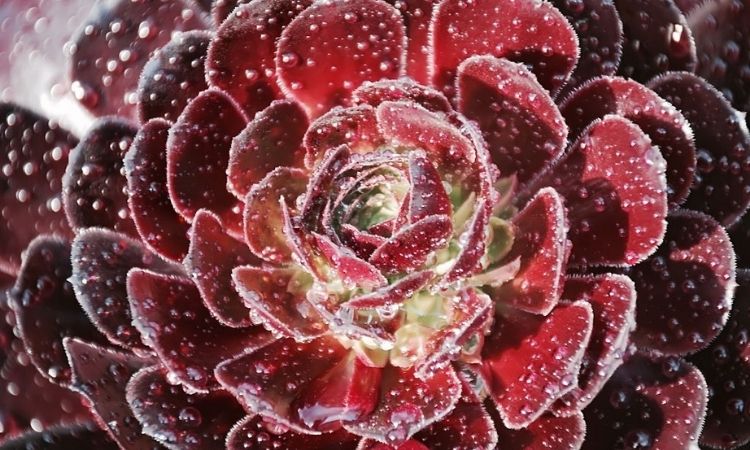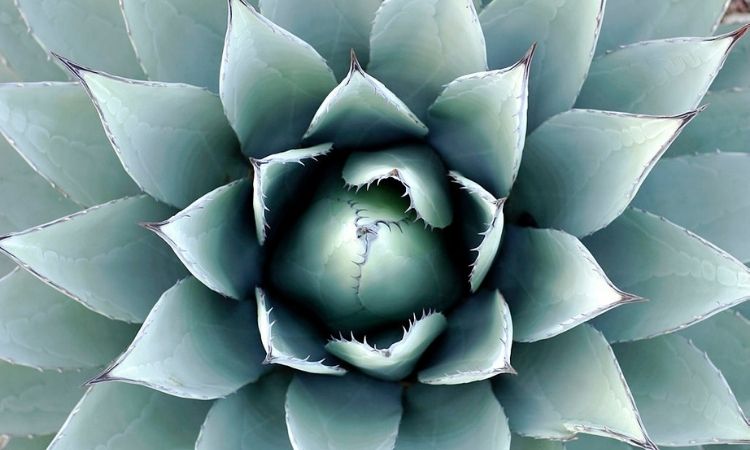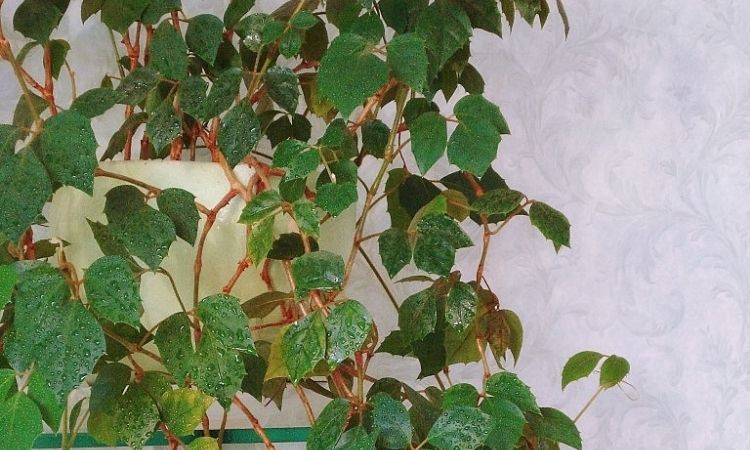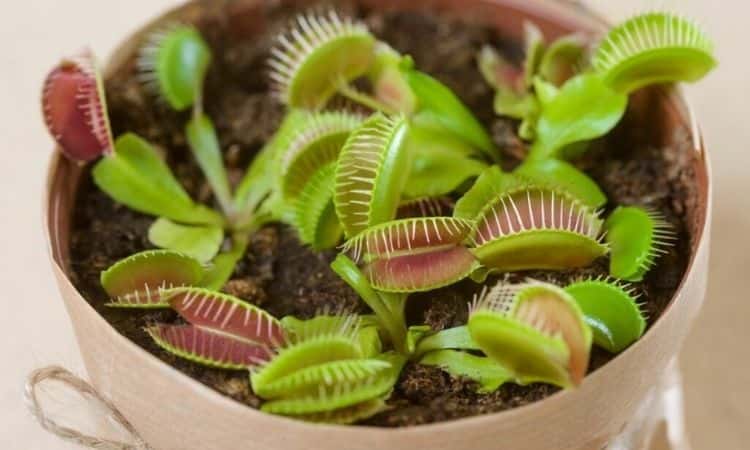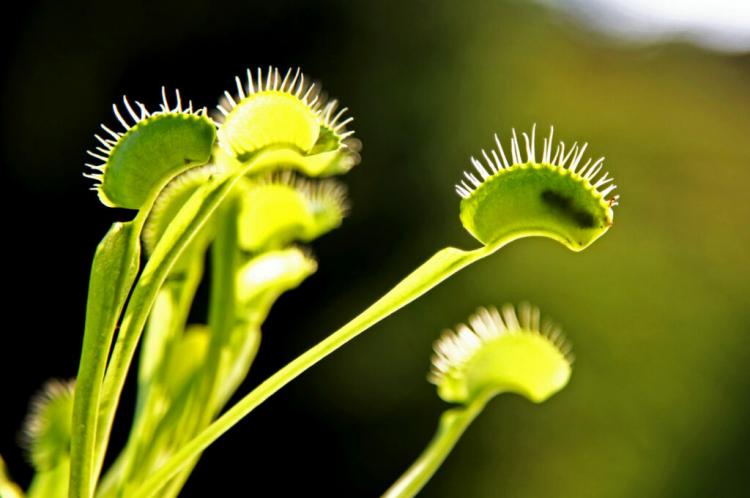Aeonium
The plant Aeonium is part of the Fat family. It comes from northern Africa and the Canary Islands. In addition, this plant has been naturalized in Southwest Australia. The Plant List says that this genus unites 36 primary species and 39 hybrids. Moreover, some of the species are very popular with flower growers.
Brief description of cultivation
Table of Contents
- Blooming. At home, aeonium almost never blooms.
- Illumination. A lot of bright sunlight is needed.
- Temperature conditions. In summer – no more than 25 degrees, and in winter – from 10 to 12 degrees.
- Watering. During the growing season, watering is carried out 1 or 2 times in 7 days. In winter – once every 30 days.
- Air humidity. Can be anyone.
- Fertilizer. During the growing season, once every 15–20 days, a mineral complex for succulents and cacti is used for this. During the dormant period, the bush is not fed.
- Rest period. During the wintertime.
- Transplant. While the bush is young – once a year, adult plants – once every 2 or 3 years.
- Reproduction. By cuttings and seed method.
- Diseases. Rot.
- Pests. Aphids, mealybugs, mites, and scale insects.
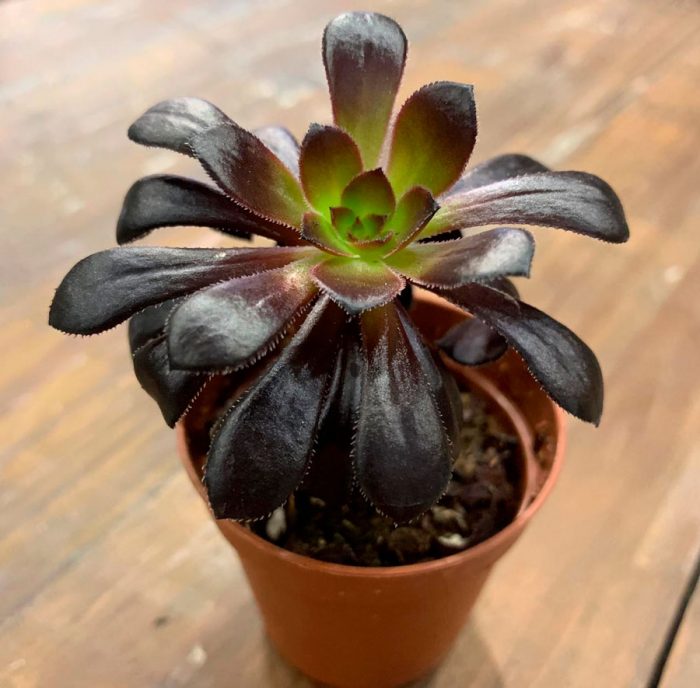
Features of the home aeonium
In indoor culture, such types of aeonium are widespread as a virgin, home, tiered, decorative, Lindley, etc. Some of these species have a life expectancy of only 2 years, but among the aeoniums, there are also real centenarians.
Most of the aeonium species are succulent plants and outwardly they look like rejuvenated plants growing in the garden. The height of their unbranched bare shoots is 10–100 centimeters. Some species form air roots.
Fleshy sessile foliage has a shape that tapers towards the base. They are collected in dense rosettes outwardly similar to a rose or dahlia and reaching a diameter of several to 100 centimeters. The foliage can be pale red, brown, green, or purple.
Indoor aeonium blooms very rarely. But in natural conditions, it forms a racemose inflorescence of a pyramidal shape, which consists of yellow flowers. These flowers fade soon after opening, and the rosette that gave the peduncle dies off at the end of flowering.
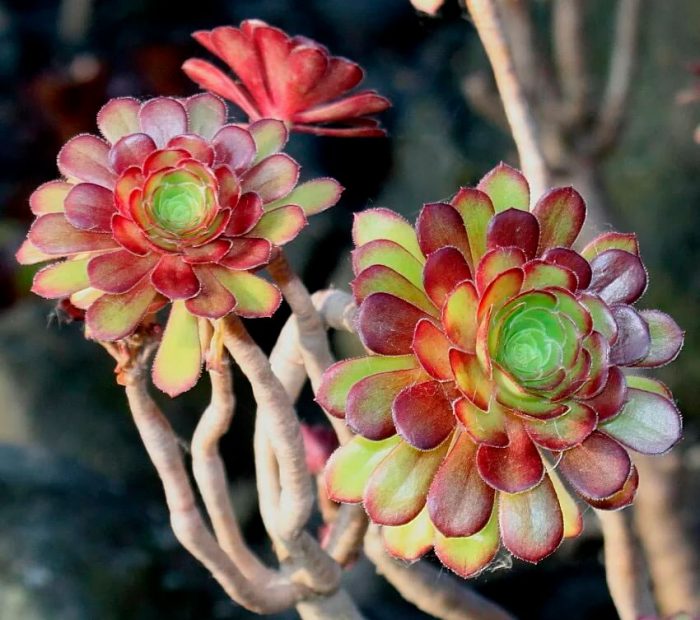
Aeonium care at home
Home Aeonium is distinguished by undemanding care and growing conditions.
Illumination
This plant is light-loving. Particular attention should be paid to varieties and species with variegated foliage, they should be provided with a lot of bright light. If they are even in a little shade, this will lead to curvature and elongation of their stems, while the foliage loses its color. In this regard, it is recommended to put the flower on a southeast or south orientation window. But remember that in the afternoon, when the sun is at its brightest, the plant will need a light shade from the scorching rays. To do this, you can use a regular curtain.
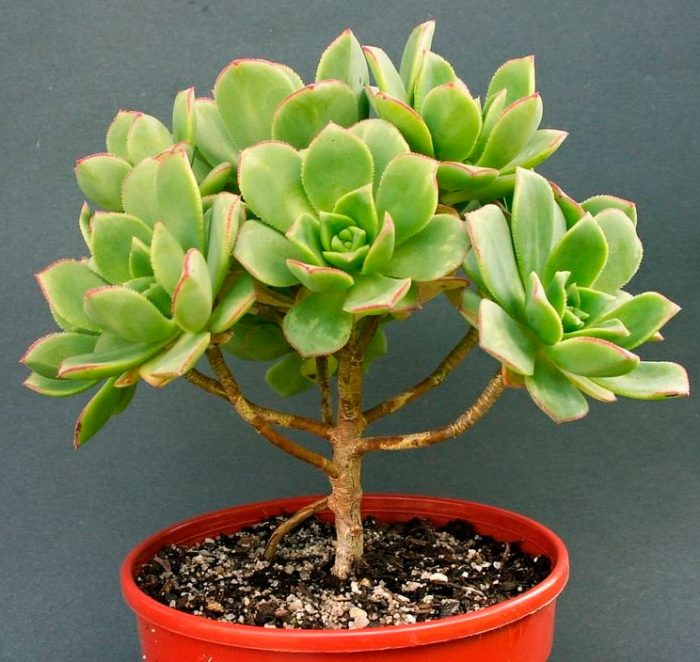
Temperature regime
The plant reacts extremely negatively to an excessively high indoor temperature. In summer, the room should not be warmer than 25 degrees, while the bush is recommended to provide a cool winter at a temperature of 10 to 12 degrees.
The flower needs a constant supply of fresh air. In this regard, the room should be systematically ventilated, and the bush should be protected from a draft. In the warm season, if possible, the plant is transferred to the street. This can be done after the air warms up to 10 degrees. With the onset of autumn, the aeonium is returned to the house immediately after it starts to get colder.
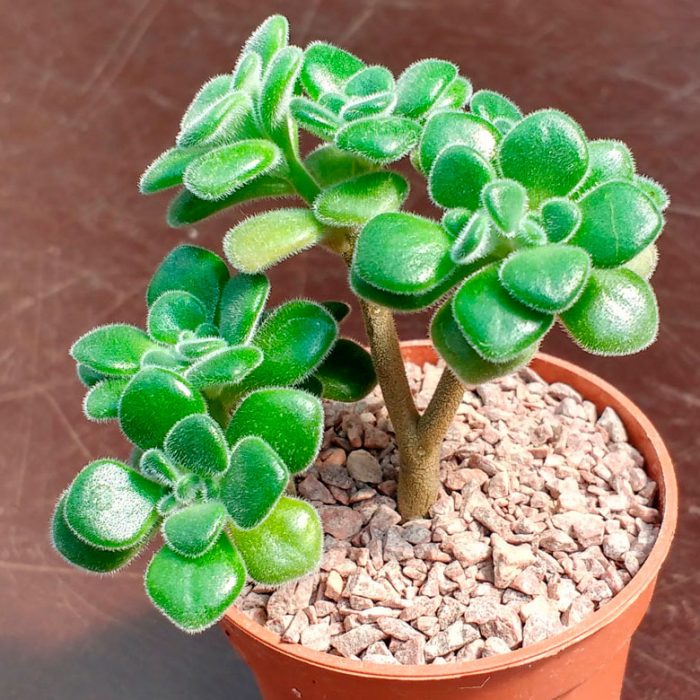
Watering
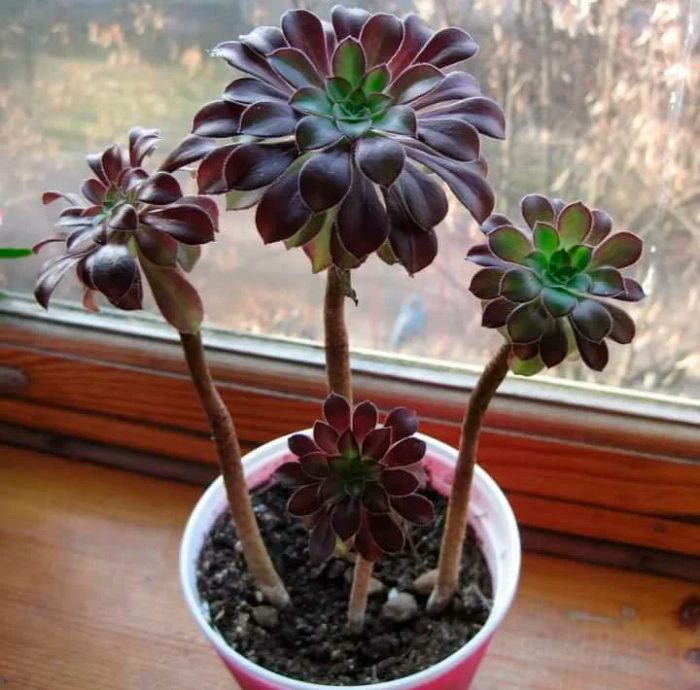
Such a succulent plant does not need frequent wetting of the substrate. Watering is more frequent in summer than in winter. However, regardless of the season, care must be taken to ensure that the clod of earth in the pot is almost completely dry before watering.
As a rule, in the cold season, aeonium is watered about once every 4 weeks. And during the growing season, this procedure is carried out approximately 1 or 2 times in 7 days. For this, well-settled water is suitable, the temperature of which should be close to room temperature. During watering, water should be poured very carefully, exclusively along the inner surface of the pot. Be careful not to let liquid get on the base of the stem or build up in the leaf outlet, as this can cause rot.
Air humidity
Such a flower does not need spraying from a spray bottle, as it grows normally at any humidity. In order to remove dust from the surface of the foliage, just use a dry brush.
Fertilizer
Topdressing is carried out during the growing season 1 time in 15-20 days. For this, you will need a complex mineral fertilizer for succulents and cacti. In the cold season, the aeonium is not fed. Also, fertilizers are not applied to the substrate even when the bush was recently transplanted into a new soil mixture.
Aeonium transplant
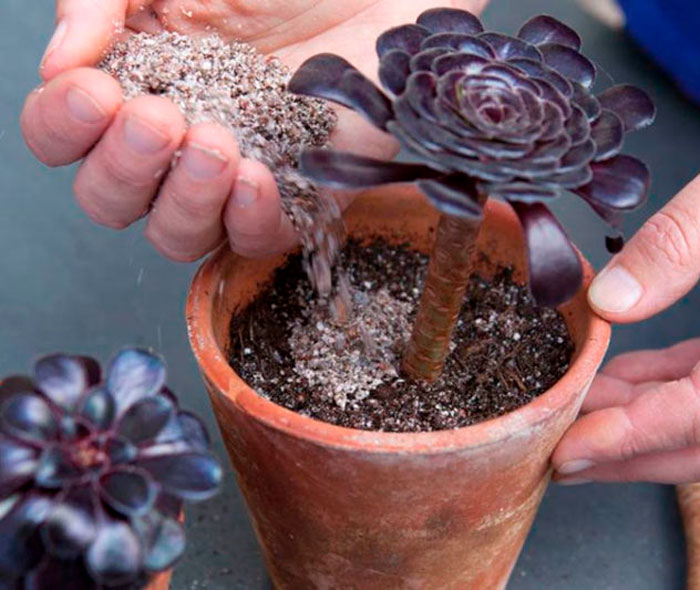
While the bush is young, it is transplanted systematically once a year. In this case, an adult plant is transplanted not so often, about once every 2 or 3 years, after the root system ceases to be placed in a new container. Do not forget to lay a 70 to 80 mm drainage layer at the bottom of the new pot. The flower is transplanted by the transshipment method, trying to keep the clod of earth intact. The voids in the new container are filled with a soil mixture, which consists of leaf and sod soil, coarse sand, and peat. It is recommended to pour a small amount of charcoal into the soil mixture, this is a good prevention of the formation of rot.
If the bush is large and rather old, then you do not need to replant it. Instead, it is recommended to change the top layer of the substrate 50 mm thick for a new soil mixture. Please note that after transplantation, the root neck of the aeonium should be at the same level as in the old container.
If there are indications that the root system of the flower is injured, then after removing it from the pot, carefully remove all soil mixture. Inspect the roots. Using a previously disinfected tool, cut out all decayed and damaged areas, after which these places should be sprinkled with crushed charcoal. Then plant the bush in a new container, while using a fresh soil mixture.
Reproduction methods
Growing from seeds

Store-bought seeds of aeonium should be sown evenly over the surface of the soil mixture used for growing seedlings. Using a spray bottle, moisten the crops and cover the container on top with transparent film or glass. For better seed germination, the air temperature should be about 20 degrees. After the seedlings get stronger, they are planted in individual cups for growing. After a leaf rosette is formed at the bush, it is planted in a permanent pot.
Stem cutting
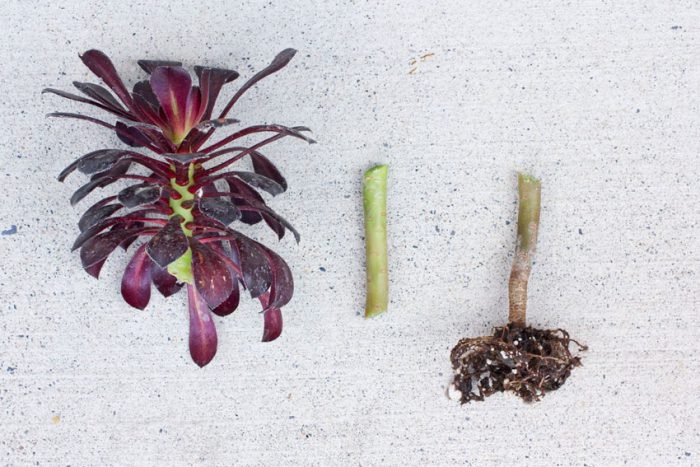
As a cutting, a stem with a leaf rosette is used, which is cut off from the parent bush using a very sharp disinfected knife. The cut should be oblique at an angle of 45⁰. Sprinkle the cuts with crushed charcoal, after which the cutting is left for two or three days to dry. Then it is planted for rooting in a sterile soil mixture consisting of leafy soil and sand. The cutting is deepened by only 20–30 mm. To get the roots to appear as soon as possible, make sure that the soil mixture in the pot is always moist. The light should be bright but diffused. As a rule, roots appear after 1.5–2 months.
Leaf-cutting
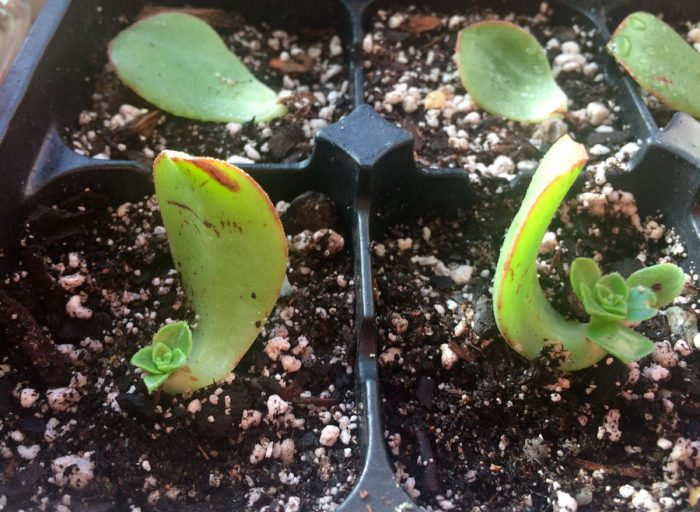
Separate one sheet plate from the outlet, after which it is left for several hours to dry. Then, it is buried at the cut point into the substrate for rooting. Watering is carried out using a spray bottle, and for this purpose, well-settled water whose temperature is close to room temperature is used. During the rooting period, the leafy cuttings must be provided with the same conditions as the stem cuttings. After a while, small rosettes should appear near the sheet plate. When they grow up, they are planted in permanent containers.
Aeonium pests and diseases
Aeonium diseases
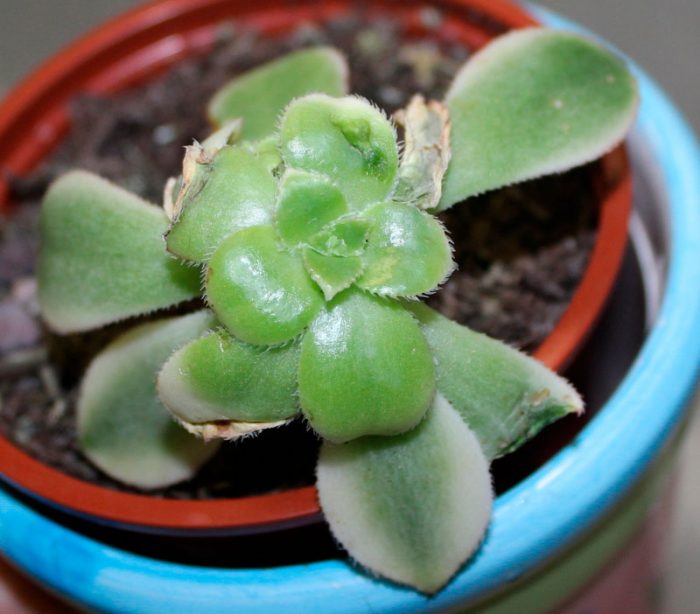
Indoor aeonium is quite resistant to disease. However, problems may arise with it due to violation of the rules of care, or rather, due to the regular stagnation of moisture in the substrate. Because of this, rot appears on the root system, which leads to wilting and wilting of the shoots, while the foliage becomes dark and dies off. In order to prevent such problems, remember that such a flower tolerates a slight drought better than waterlogging.
Also, the following problems may arise with the aeonium:
- The foliage first darkens, then fades and loses turgor. The room is very cold. If only the lower leaf plates die off, then you should not worry, since this is a completely natural process.
- On the foliage, there are spots of a yellow or dark shade. They are formed due to the direct rays of the sun.
Pests
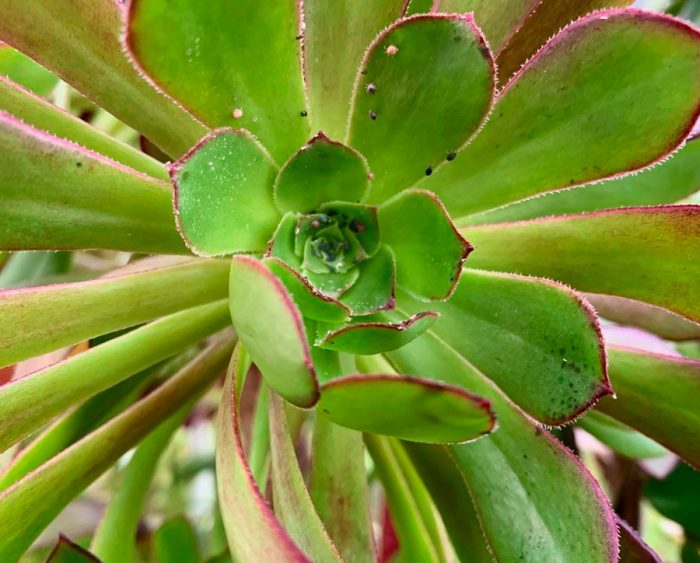
Pests such as aphids, mealybugs, spider mites, or scale insects can settle on the plant. They suck the sap from the foliage, making punctures in it. If you do not get rid of the pests, then the aeonium will begin to fade.
Treat all parts of the bush with a soap solution. After a while, wash off the soap from the flower with clean water, having previously protected the surface of the substrate with a film. If scale insects or worms have settled on the bush, then before processing with soap, insects are removed from the plant with a cotton swab moistened with alcohol. In the event that the pests have already multiplied, they can only be destroyed with an insecticide. It is recommended to spray the bush outdoors.
Spider mites settle on a plant if the air in the room is very dry. You can understand that there are ticks on the bush by examining the shoots and foliage: there will be a thin cobweb on them. Treatment with acaricide will be required.
Types of aeonium with photos and names
Aeonium nobile
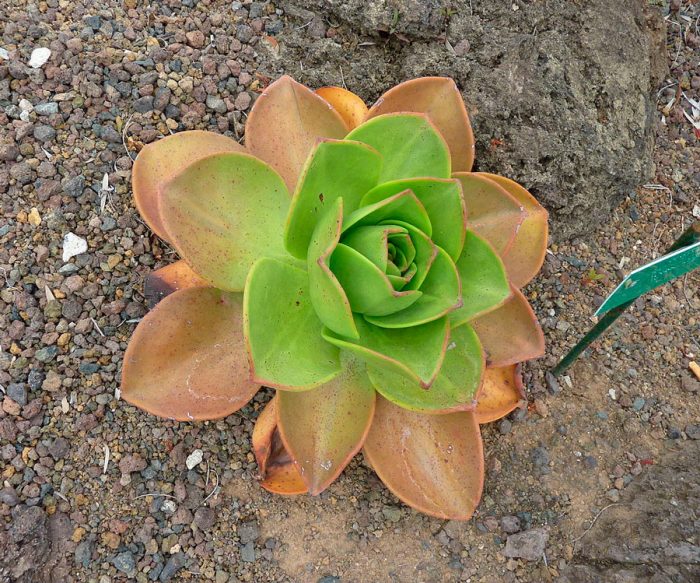
The leaf rosette at the bush reaches about half a meter in diameter. It consists of juicy olive-colored leaf plates curving along the edge. Small flowers are collected in powerful inflorescences, outwardly their shape resembles the outline of a tree crown on a high trunk.
Aeonium burchardii
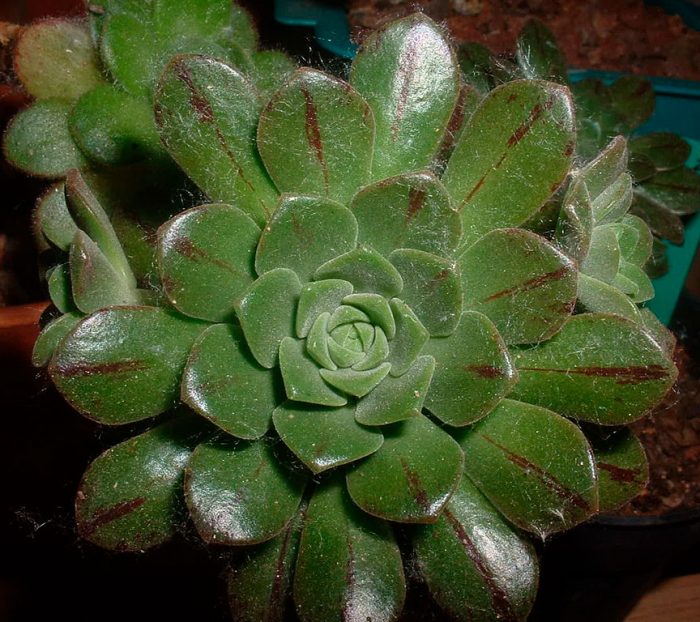
This hybrid is very beautiful and small in size. It is decorated with dark shoots and leafy rosettes, reaching about 10 centimeters in diameter. They are composed of juicy leafy plates, pointed at the top: the base is green, and the top is orange-brown.
Aeonium decorum

This type is very popular with flower growers. The height of the shrub is about 50 centimeters, the stems have a rough surface. Compact rosettes of a pink shape consist of smooth, sharp-toothed green-pink leaf plates, the length of which is about 30 mm. The most popular variety is the aeonium tricolor.
Aeonium canariense
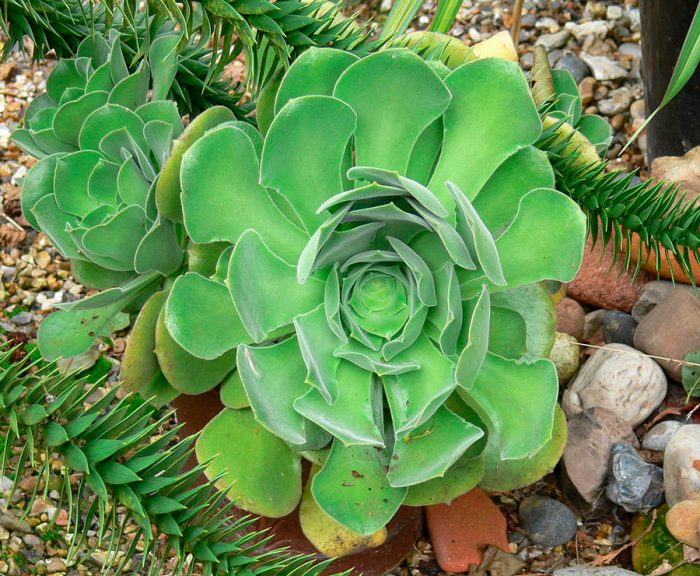
Near the bush, shoots are almost invisible. The stems are covered with squat rosettes, which consist of large leaf plates of green-brown color, distinguished by a special bend. After some time, the socket grows strongly and becomes loose.
Aeonium virgineum
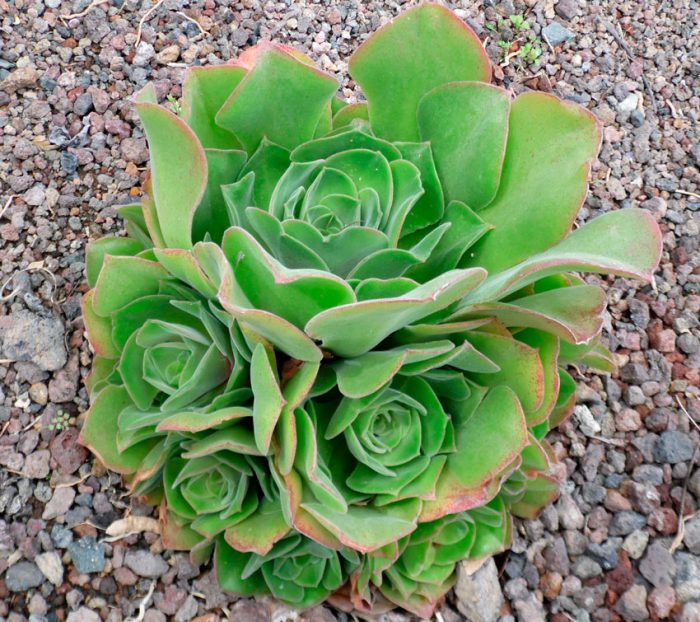
There are thick cilia on the edge of the round leaves. On the surface of the foliage, there is velor pubescence. The leaf rosettes are almost flat, they have a delicate scent and look similar to green pillows.
Aeonium domesticum
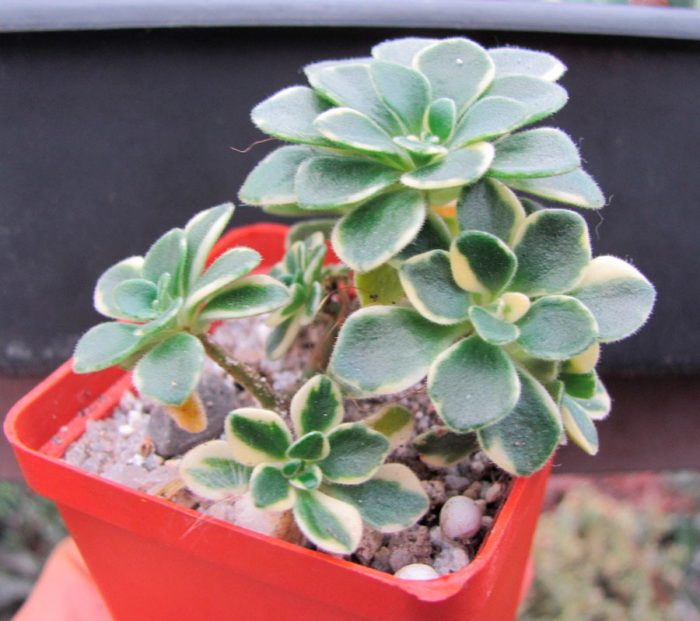
The height of such a branching succulent plant is about 0.3 m. The curving open shoots are decorated with dark ovoid leaf plates, which are collected in rosettes, like in zinnia. Aeonium domesticum Variegata is especially popular in indoor culture.
Aeonium undulatum
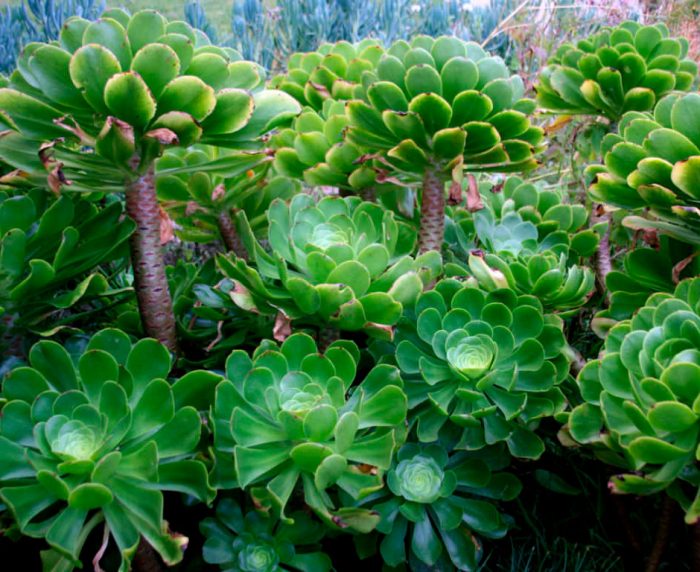
There are many scars on the surface of thick silvery shoots. Large leaf rosettes reach about 0.3 m in diameter, outwardly they are similar to a bud that has opened halfway. The rosette consists of bright, tightly set, rounded leaf plates that taper towards the base.
Aeonium arboreum
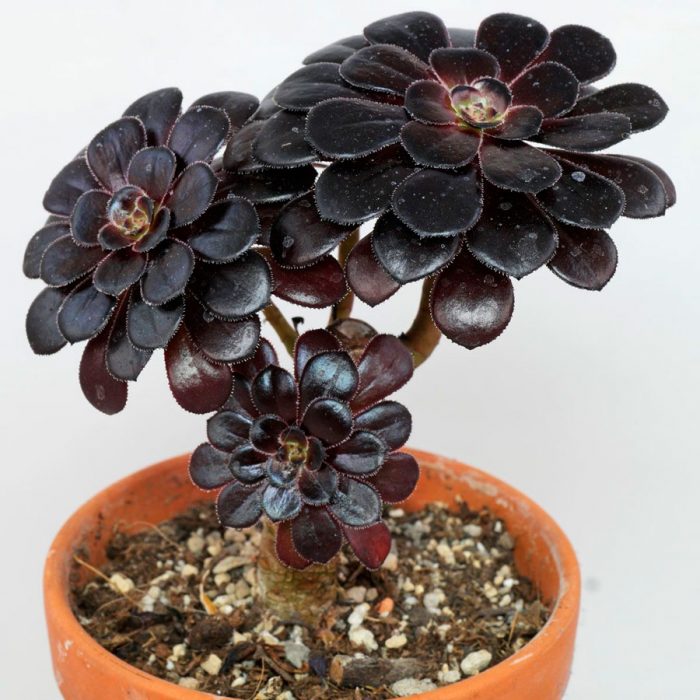
This plant also branches, while its stems are lignified at the base. Leafy rosettes are formed on the upper parts of the shoots, their diameter is about 20 centimeters. They include spatulate foliage, which, as a rule, is colored brown, there may be greenish specks.
Golden aeonium (Aeonium holochrysum)

Straight stems slightly hanging at the tops are decorated with spatulate thick leafy plates of a greenish-yellow color, along the edge and in the center of which there is a purple stripe. The leaf rosette reaches about 20 centimeters across.
Aeonium lindleyi

This species reaches a height of about 30 centimeters and branches very strongly. Curly thin stems are colored brown. On the upper parts of the stems, there are dense leafy rosettes of a dark green color. They include pubescent fragrant leaf plates with a rounded edge, their surface is slightly sticky.
Aeonium tabuliforme
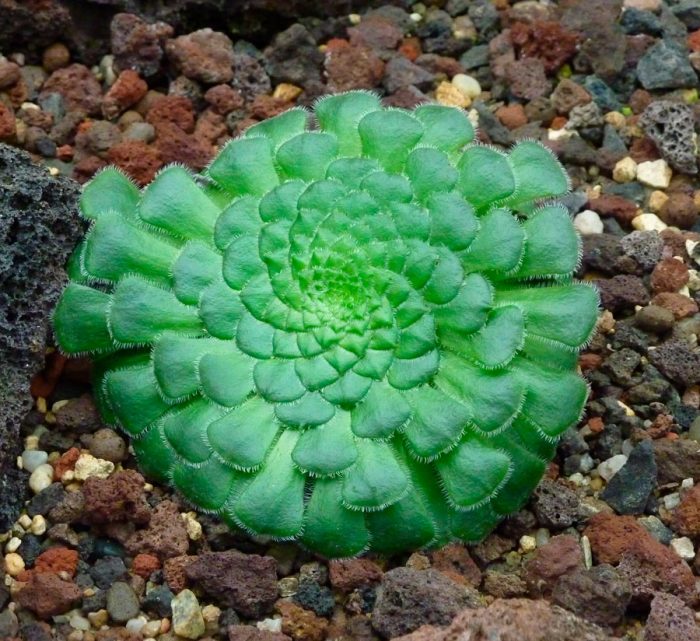
The undersized bush stands out for its symmetry. The stem of a bush is difficult to distinguish. The sessile rosette reaches about half a meter across. Its shape resembles a flat plate. The rosette includes spatula-shaped sessile leaf plates arranged in tiled patterns and covered with whitish cilia.
